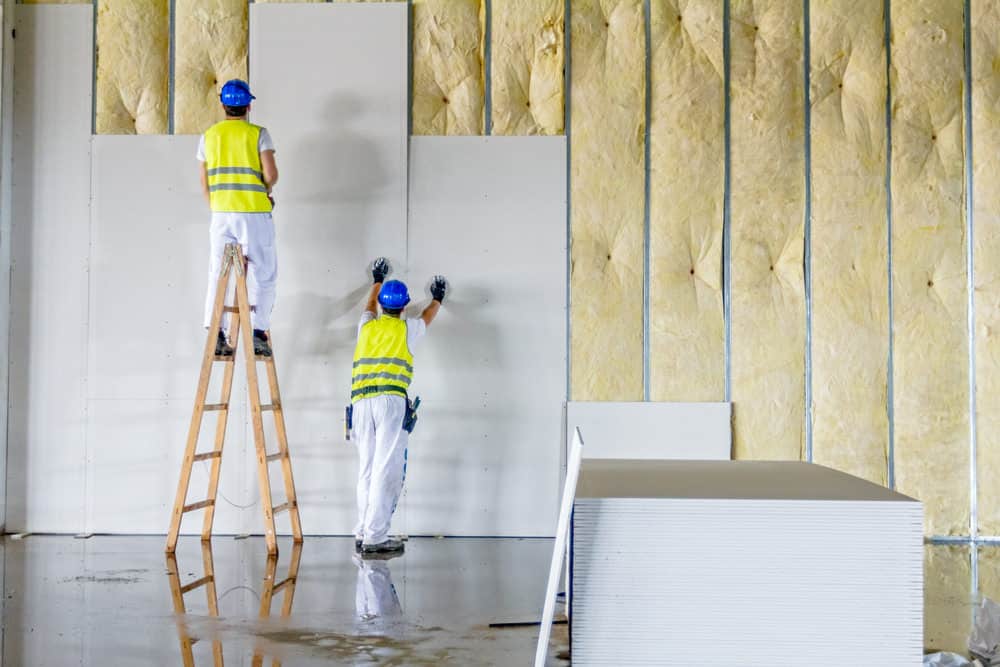|
What are the advantages and disadvantages of Gypsum Boards?
Gypsum board is the most common name amongst all the panel products. This board consists of gypsum, non-combustible core, and paper surfacing – on the backside, long edges, and on the face. All gypsum panel products come with gypsum cores that can be confronted with a variety of different materials like paper, fiberglass mats, etc.
Below are the advantages of the Gypsum Board:
1. Versatile
With a gypsum board, you can easily achieve various element design of architectural requirements. Unlike other surfacing products, Gypsum boards offer high performance, ease of application & repair, and adaptability in all kinds of decoration.
2. Easy to Install
Gypsum installation is extremely easy and fast. Available in lengths of 8, 10, or 12 feet and in width of 48 inches, it allows covering larger areas of ceilings as compared to other materials. Besides, due to its lightweight, the number of workers required to handle it reduces, thus decreasing the labour cost.
3. Fire Resistant
Gypsums are fire-resistant material and come with a low flame-spread index and a low smoke-density index. Gypsum plaster is highly fire-resistant and can hold fire for up to three hours. adequately protecting other structural elements for a certain period of time.
4. Low thermal conductivity
Gypsum plaster offers low thermal conductivity, making it great for saving heating and cooling costs in a building.
5. No curing time
Gypsum plaster is ready-made and doesn’t require additional curing time. It also helps save resources such as the water needed for the process. Painting job can start as soon as three to four days of gypsum application.
6.No shrinkage
Cement is known to react when it comes in contact with water. So its plaster ends up getting cracks once it dries. Gypsum plaster is more effective and suffers from few to no shrinkage cracks, making it a better alternative to mortar plaster.
7. Great finish
Gypsum plaster walls are perfectly lined and leveled, unlike mortar plaster which requires a lot of labor to achieve smoothness. It helps create visually appealing living rooms with ease.
8. Storage and Shelf Life
The shelf life of gypsum plaster is usually 3-4 months from the date of manufacture. It is light-weight and hence its usage for plastering does not increase the structural load on the building. Gypsum plaster prevents rusting of metal fittings like pipes and increases their durability.
While there are advantages, gypsum come with some disadvantages as well:
1. It doesn’t perform well against water
We cannot use gypsum plaster for outer walls. These retain dampness and are not the most suitable for areas with walls that come in regular contact with water, such as bathrooms and toilets. Even though there are modified water-resistant, they do not perform as well as cement plaster. It’s difficult to use in conditions where exposure to moisture is high.
2. Low shelf life
Gypsum, as a material, comes with a limited shelf life. You can keep gypsum plaster for up to 4 months, but if you take extra care, its life goes up to around ten months.
3. For the same thickness, gypsum plaster is costlier than cement plaster.
Despite these shortcomings, Gypsum Boards are the best alternative for surfacing boards and can really be beneficial in a long run.
|
|
The right maintenance can actually save you a lot without compromising on the aesthetic appeal of your house.
Okay, let’s be honest: as much as it’s a blessing to have a home, its maintenance can also be a curse. Because nobody really loves to spend time, money, and effort in maintaining it, isn’t it? However, there’s a silver lining here. If done right, maintenance can actually save you a lot of time and money without compromising on the aesthetic appeal of your house. And painting is an important aspect of maintenance that needs to be paid attention to. No, we are not asking you to paint your home every now and then; there are some truths about painting, coming from pros, that’ll help you understand how often you should repaint.
Painting, contrary to popular beliefs, isn’t just a cost-effective way to make your house look beautiful. In fact, when done regularly and correctly, can increase the lifespan of your walls as well.
As we all know that walls come with a lot of threats. Kids, pets, humidity, light, smoke, or temperature fluctuations. They are like the skin of your home, and just like we look after our skin wellbeing, walls need to be looked after as well with the same commitment.
Statistics suggest that most interior paint jobs last somewhere between 5 to 7 years in an ideal scenario. If the external factors like the ones mentioned above are not involved, it can go up to 10 years. However, this applies to areas where traffic is less and are not subject to environmental fluctuations. In areas that are susceptible to extra wear and tear, it’s recommended to repaint them more often. These areas include:
- Bathroom
- Kitchen
- Laundry rooms
Since these areas face a lot of humidity, grease, smoke, and odor, it’s advisable to redo them every two to three years.
Ceiling, on the other hand, can go up to 10 years without paint jobs, but there is a catch: if there’s a smoker in your house, you may want to redo them more often to avoid yellowing.
Painting is a time-consuming and expensive affair. However, if you go about it smartly, you won’t have to burn a hole in your pocket. And for that, knowing how often you should repaint is crucial.
|




